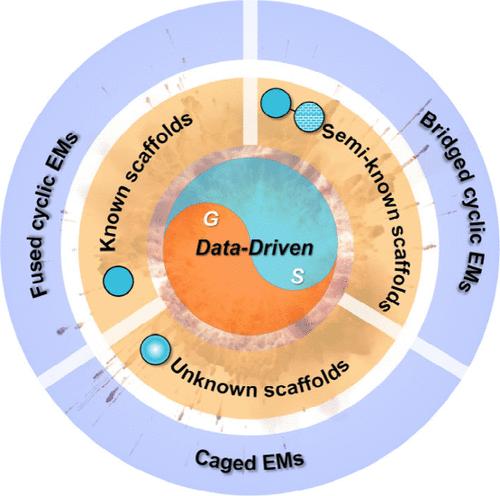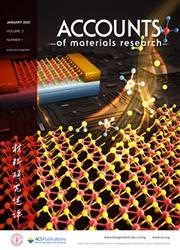Data-Driven Combinatorial Design of Highly Energetic Materials
IF 14
Q1 CHEMISTRY, MULTIDISCIPLINARY
引用次数: 0
Abstract
In this Account, we present a comprehensive overview of recent advancements in applying data-driven combinatorial design for developing novel high-energy-density materials. Initially, we outline the progress in energetic materials (EMs) development within the framework of the four scientific paradigms, with particular emphasis on the opportunities afforded by the evolution of computer and data science, which has propelled the theoretical design of EMs into a new era of data-driven development. We then discuss the structural features of typical EMs such as TNT, RDX, HMX, and CL-20, namely, a “scaffolds + functional groups” characteristic, underscoring the efficacy of the combinatorial design approach in constructing novel EMs. It has been discerned that those modifications to the scaffolds are the primary driving force behind the enhancement of EMs’ properties.

数据驱动的高能材料组合设计
在本开户绑定手机领体验金中,我们全面概述了应用数据驱动组合设计开发新型高能量密度材料的最新进展。首先,我们概述了在四种科学范式框架内开发高能材料(EMs)的进展,并特别强调了计算机和数据科学的发展所带来的机遇,这推动 EMs 的理论设计进入了数据驱动开发的新时代。然后,我们讨论了 TNT、RDX、HMX 和 CL-20 等典型 EM 的结构特征,即 "支架 + 功能基团 "特征,强调了组合设计方法在构建新型 EM 方面的功效。人们发现,对支架的这些改性是增强电磁特性的主要驱动力。
本文章由计算机程序翻译,如有差异,请以英文原文为准。
求助全文
约1分钟内获得全文
求助全文

 求助内容:
求助内容: 应助结果提醒方式:
应助结果提醒方式:


